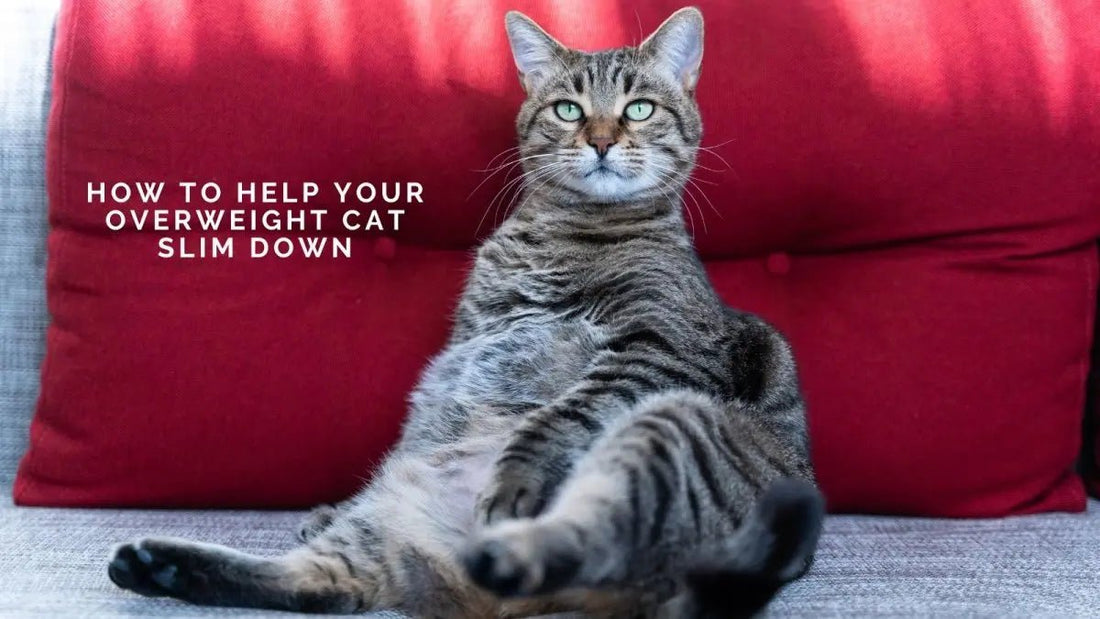
How to Help Your Overweight Cat Slim Down in a Multi-Cat Household
Share
As a pet parent, you love your cats dearly—but if one of your kitties starts tipping the scales, it’s time to take action. Managing an overweight cat’s diet can be tricky, especially when you have multiple feline friends sharing the same food bowls. Don’t worry, though! With a little creativity and consistency, you can help your overweight cat reach a healthy weight while keeping your other cats happy.
Why Cats Can’t Afford to Be Overweight
First, let’s talk about why a cat’s weight matters so much. Cats are built for agility, speed, and stealth. When they carry extra weight, it can lead to serious health problems, including:
Diabetes: Overweight cats are at a higher risk of developing diabetes, which requires lifelong treatment.
Joint Problems: The extra pounds put stress on their joints, leading to arthritis and mobility issues.
Heart Disease: Excess weight can strain a cat’s heart and lead to cardiovascular problems.
Reduced Lifespan: Studies show that overweight cats tend to live shorter lives than their lean counterparts.
Now that we know why maintaining a healthy weight is vital let’s dive into how to help your overweight cat without creating chaos at mealtime.
Identify the Overweight Cat’s Needs
Every cat is unique, so your first step is to determine how much weight your overweight cat needs to lose. Your vet can assess your cat’s ideal weight and help create a diet plan. Often, this involves switching to a low-calorie, high-protein cat food.
Meal Feeding Instead of Free Feeding
If you’ve been leaving a communal bowl of kibble out all day, it’s time to switch to meal-feeding. Here’s why:
Free feeding encourages overeating, especially for an overweight cat.
Meal feeding allows you to control portion sizes for each cat.
Set specific mealtimes and provide measured portions for each cat based on their individual needs.
Separate Feeding Areas
To ensure the overweight cat doesn’t sneak bites from the others’ bowls, establish separate feeding zones.
Use Different Rooms: Feed each cat in a separate room and close the doors during mealtime.
Elevate Food Bowls: Place the healthy-weight cats’ food bowls on a high surface where the overweight cat can’t jump.
Use Microchip Feeders
Microchip feeders are a game-changer for multi-cat households. These innovative feeders are only open for the cat assigned to them based on their microchip or collar tag. This ensures the overweight cat can’t access food meant for others.
Encourage More Activity
Weight loss isn’t just about diet—it’s also about exercise! Cats are natural hunters, so engage them with interactive toys, laser pointers, or even food puzzles. For your overweight cat, consider short play sessions multiple times a day to help burn extra calories.
Monitor Progress
Weigh your overweight cat weekly to track their progress. Celebrate small victories (with pets, not treats!) and adjust their diet plan as needed, always consulting your vet.
Be Patient
Weight loss in cats is a gradual process, and it’s important not to rush it. Losing weight too quickly can lead to hepatic lipidosis, a serious liver condition. Aim for slow, steady progress—about 1-2% of their body weight per week.
Helping your overweight cat slim down in a multi-cat household is definitely doable with a bit of strategy and care. By controlling portions, feeding separately, and encouraging play, you’ll give your feline friend the best chance at a healthier, happier life.
What about you? Do you have tips or stories about managing a multi-cat household with varying dietary needs? Let me know in the comments below—I’d love to hear them!